by Bill Poole | Sep 14, 2021 | Sales
Does this sound familiar to you: Your company’s monthly sales results look like a roller coaster at Six Flags. You’re up one month, then down the next. You have a great quarter, and then the next you drop off. Why do we experience the roller coaster ride with crazy peaks and valleys in our sales results? In this blog, we’ll talk about how you can create a more predictable sales funnel that is more consistent and has shallower valleys.
The Problem
At its core, peaks and valleys in your sales funnel point to a lack of consistency. There isn’t a consistent stream of sales coming in, which means that your monthly numbers are all over the place and it’s hard to predict where you’ll be at the end of the quarter, year, etc.
The Culprit
We believe that this problem stems from a lack of consistent processes in both sales and marketing. One example of what this ends up looking like is that your sales reps may do seasonal prospecting. In January, everyone’s out pounding the pavement and getting prospects and then they have a great March because those orders from January finally closed. It may appear like the reps have been doing great work from January through March, when really they may have stopped prospecting at the end of January. So then they’re gonna have a bad April and May because they stopped prospecting months ago and the top of their funnel dried up. They’ll start their prospecting back up in April and May and have a good June.
This same issue happens with marketing as well. What happens if you aren’t consistent with your marketing efforts? For example, if you invest a bunch in Google ads and have a big campaign, you may rake in a bunch of leads. Then once you turn off your ad campaign, the leads dry up. The lack of consistency means that the leads come in spurts, rather than flow in.
Consistent Processes
Let’s talk about consistency and processes. At Convergo, we like to think that these two things go hand in hand. When things are happening consistently, you can turn them into formal processes. These processes should be trainable and optimizable. It’s crucial to put these repeatable processes in place because it sets you up for reflection, analysis and improvement. One big thing tha t we are driven on at Convergo is ensuring that companies have processes in place for net-new business, to make sure that your funnels don’t feel like a roller coaster, but rather a steady climb up and to the right towards your revenue targets.
t we are driven on at Convergo is ensuring that companies have processes in place for net-new business, to make sure that your funnels don’t feel like a roller coaster, but rather a steady climb up and to the right towards your revenue targets.
If you implement consistent, well-documented processes that are expected and inspected and managed, then it can really even out those peaks and valleys.
Metrics Lead to Predictability
Increasing metrics are obviously a positive sign when it comes to sales and marketing. This can also be a valuable tool when adjusting any type of process within your business. Let’s say you know the clear gates between each stage of your pipeline and the conversion rate between one stage and the next is 50%. This allows for a more accurate adjustment because you have an actual number to go off of. It’s an easier way to keep an eye on the metrics that are doing well and those that are not. Check out this blog post for a better idea of sectioned “gates” within the sales process.
Once you have clear processes you can measure two things: quantity and quality.
How often are your team members executing your processes and the activities at each step? How often does a prospect make it from one pipeline stage to the next? You have two things to consider once a process has been established and those are quantity and quality. It’s critical in sales that every aspect becomes a process because then you can actually count it and measure it, and then you have something that you can optimize. Always ask yourself what’s working and what isn’t really working. You want the roller coaster feeling of going up and up. Keeping up with the quality of those conversion rates is key. Without that quality, you’re probably going to be stuck on that roller coaster going up and down.

Progress, Not Perfection
So where do you begin? Maybe you have some activities happening consistently. Maybe you have a couple of formal, documented processes. Maybe you have a couple team members that are very effective and consistent.
One easy thing to get started is to pool all of your resources. Figure out which person is doing really well at each activity that needs to happen and figure out how you can turn what they are doing into formal processes that can be repeated by the rest of your team members. Basically, who is achieving very well in each stage and how can you replicate what they’re doing. Give all of your team members the knowledge and resources they need to have the same success.
Since you are now setting out to create repeatable and clear processes, you can now hold your team accountable. You may be able to have a measurable for each team member that you can coach them on now. For example, if the average conversion rate on your team between stage 1 and stage 2 is 50% and you have a rep who’s converting at 20%, it’s clear what you need to coach that rep on. If the average activity on a given stage is 20 per day, and you’ve got a rep that’s doing 5 per day, you have a coachable opportunity there. When you have repeatable processes, you end up with clear numbers that help you pinpoint coachable opportunities to help your team.

by Bill Poole | Mar 15, 2021 | Sales
2021 is a make-or-break year for many businesses. Right now we need to do everything we can to protect our margins while also growing revenue. Here are three ways that you can make that happen.
1. Focus on Cross-Selling
Most great companies deliver outstanding support to customers. Yet many do a weak job at cross-selling additional products, services, and solutions to their customer base. 2021 is a time to get sales and marketing aligned around processes to cross-sell to the base to maximize revenue per client.

2. Map Your Customer Experience
Service is great, but it is reactionary. What could it look like if you became proactive in how you removed friction at every stage of the buying experience and customer experience? Great experiences increase close rates, facilitate cross-selling, and improve client retention—three things we all need right now.
3. Understand What Your Buyers Are Buying
Buyers don’t buy products, they buy the outcomes your products and services create. Last year the outcomes shifted. For example, in the tech world instead of wanting scalability and efficiency, companies turned inward during the pandemic needing resiliency, flexibility, and remote work options. As we emerge from the pandemic, these outcomes will shift again. As this happens, we need to identify these outcomes and retool our marketing and sales messages.
Cross-selling, customer experience, and message all work together to drive revenue growth. Right now is a critical time to consider each of these as you optimize your company’s revenue growth plan to thrive in 2021 and beyond.

by Lisa Dalton | Mar 11, 2021 | Sales
There is a reason school kids have been working in groups – that is how they are going to work in business! The more people in the decision making group the harder it is to make a decision. So it’s even tougher when you’ve lost touch with your buying committee. And that is easier and easier to happen now with the size of buying committees and people working from home, rather than in the office.
So what can you do when you have lost touch with your buying committee. Here are some things to try once that happens, but keep reading to see what you can do to try and avoid the problem.
Options once your buying committee has disconnected:
1. Try connecting from multiple methods – email, phone, snail mail, etc.
2. Connect with as many committee members as possible in a variety of ways.
3. Do some research to see if you can find out what is going on with the company or buying committee members.
4. Ask your closest committee member directly what is holding the decision up.
5. Try and align the team to the reason they were buying in the first place.
- If it is financial, calculate how much they are losing on a daily basis by not signing.
- If it is to be compliant with new regulations calculate the potential liability of not be compliant by the amount of time they are delaying.
- If you are saving time or driving other efficiencies, calculate the loss by not signing by day.
To reduce the risk of the buying committee disconnecting make sure you:
1. Understand the buying committee members and their roles in this decision making cycle.
2. Understand what the common challenge or problem is for the group.
3. Understand what the individual challenges or problems are for the committee members.
4. Make sure your solution addresses the overall challenge and the benefit the organization will reap.
5. Make sure your solution addresses the challenge for each buy committee member and their team and what they will gain from choosing your solution.
It always stings when you get disconnected from a buying committee. They engaged you earlier, don’t give up easily. Keep reaching out respectively, but creatively.

by Bill Poole | Jan 11, 2021 | Marketing, Sales
The Convergo Approach Series
Part 1: The Difference Between Convergo and a Marketing Agency
Part 2: A Strategic Approach
Part 3: The Lens of the Ideal Client Experience
Part 4: Sales and Marketing Integration
Part 5: Sales and Marketing Processes
B2B companies often outsource marketing to an agency and have their sales team in-house. Of course there are advantages to outsourcing, but do you really think your sales and marketing departments should work for different companies?
Many entrepreneurial businesses have very tight processes when it comes to the operational side of the business. From a process standpoint when it comes to sales and marketing, it is The Wild West. Things like marketing “campaigns” and sales “blitzes” are short-term, flavor-of-the-month tactics, not sustainable processes.
At Convergo, we help our clients create and implement sustainable sales and marketing processes around the Ideal Client Experience to meet revenue growth goals. This is a significantly different approach from hiring an outside marketing agency to get “leads” for your in-house sales team.
A common link between Convergo and a marketing agency is content. Content is the fuel that drives all sales and marketing processes. Our Focused Message Framework provides a guideline for businesses to ensure that their content supports their ideal prospect from the time they realize they have a problem, to the time that they are a client enjoying everything that they can offer.
In closing, as you contemplate your direction with marketing services, what is it that you really want? Marketing or revenue growth?
If the answer is revenue growth, we’d like to talk!

by Bill Poole | Jan 8, 2021 | Marketing, Sales
The Convergo Approach Series
Part 1: The Difference Between Convergo and a Marketing Agency
Part 2: A Strategic Approach
Part 3: The Lens of the Ideal Client Experience
Part 4: Sales and Marketing Integration
Part 5: Sales and Marketing Processes
It is no secret that sales and marketing departments typically have an adversarial relationship. Sales wants marketing to provide better leads, and the marketing department thinks the sales team isn’t doing their job effectively because they don’t close the leads that they give them.
Lead Handoff
Traditionally, marketing agencies look at the “hand off.” The handoff is where the marketing qualified lead is passed along to the sales department for “qualification.” I use the word qualification loosely because many of these leads are not truly ideal clients that are appropriate for any sales engagement at all.
Taking a step back and thinking about things from the lens of the Ideal Client Experience enables us to remove the barriers that traditionally exist between sales and marketing. This might involve:
- Considering the client’s motivation at each stage of their experience and any friction that is keeping them from moving forward
- Determining what could be done to minimize that friction for the client and grease the skids to get to the next stage
- Deciding what role that sales and marketing have in greasing those skids to enable movement. Operations comes into the picture as well when you are looking at the product or service delivery stages of the client experience.
Let’s look at a practical example from our experience as to what this might look like. I am sure you have clients that are leveraging some of your products or services, but may not be taking advantage of everything that you could do for them.
Two primary reasons for the client not taking full advantage of all of your products and services that we typically see are:
- The client is not fully aware of the impact that you have on their business
- The client is not aware of the value of the full suite of products or services that you might be able to provide for them.
So what can be done? Conceptually, the client needs to be reminded from time to time of the impact of your products and services on their business as well as the additional outcomes that your company can provide for them.
How can sales, marketing, and operations align around this? Here’s an example solution with two complementary parts:
Implement a Periodic Business Review Process
This is a sales-led strategy where you can:
- Get calibrated on your client’s business
- Report back to the client on the success metrics that you are delivering for them. Operations can usually support this by providing metrics and insight on what is going on from a delivery perspective.
- Gather additional insight from them as to how your products and services are affecting their business. This will help you have future discussions with prospects and other clients.
Implement a Communications Plan
This is a marketing-led strategy that might leverage platforms like email and social to ensure your clients are aware of all of the possible outcomes that you could deliver to help them with their business.
This is just one example of sales and marketing (and operations) working together to improve the client experience instead of being at odds with each other about “leads.” Thinking about things from the clients perspective can align the thinking of the entire organization around improving the client experience to grow revenue.
Both sales and marketing have a role in taking the client through the experience with your organization. With sales and marketing working together to create a great and seamless experience at each stage, there will be more clarity on what makes a good lead and how to convert that lead to be a loyal and happy customer.

by Bill Poole | Dec 18, 2020 | Marketing, Sales
Originally published on Revenuegrowthengine.net.
For those who are obsessed with their products, the superiority of their business, or the beauty of their brand, this statement contains a hard pill to swallow. As great as your products are, as experienced as your team is, and as responsive your customer service may be, that’s not what buyers are buying. People do not buy your products, they buy the outcomes your products create.
Bob Moesta explores this principle in Demand-Side Sales 101. He shares the story of how he stopped trying to push his product on customers. Instead, he worked to understand the actual outcomes the customer desired. Then he engineered the buying process to satisfy the customer’s demand.

Buyers have a “job to be done”. That is why they buy a product. Period.
The “Jobs to be Done” theory (pioneered by Moesta and Clayton Christiansen one of my favorite authors) has been applied to design the world’s best-selling products. Successful product design begins with an obsessive examination of the outcomes that consumers want. Based on this, the product is reverse engineered to meet the demand.
The opposite of the “Jobs to be Done” theory is the “Product to be Sold” theory. Companies create products designed based on assumptions about what the prospect wants. Next, they fire up the manufacturing plant or the development team to build the product.
These ill formed products are presented to the sales team who then applies the “Quota to be Hit theory.” Sales reps assume they know what the prospect wants. Then, they proceed to put square pegs in round holes. It can work, but it creates a mess, a lot of hammering, and mediocre results.
Like Simon Sinek prophecies, we end up starting with “What?” and then try to answer the question, “How?” All of this ends up with frustration and often failure.
What if we actually started with “Why?” Why would the consumer care? Where are they feeling discomfort or frustration and why?
Moesta believes that for most companies there are only a handful (3-5) core “whys” that create demand. Once we intimately understand these drivers of demand, we can then craft our Ideal Client Experience and Focused Message around this demand.
Start with your Ideal Client. What outcomes do they want? This forms the foundation of demand. Build on this foundation and you’ll find success, even in an uncertain market. (Build on the foundation of how great your product and company are and you’ll discover that you have built your company on sand.)
How do you discover the outcomes your clients want? Ask and observe. Ask your Ideal Clients about their goals and challenges. Peel back the layers of the onion. Go deep. Seek understanding as to the real implications of the problem for their business and personal lives. (For more, read Value Is In the Eye of the Beholder.)
Then, watch. Pay attention to how the current situation frustrates them. What are their work-arounds? What’s holding them back.
From the client perspective, craft your Focused Message around the outcomes your Ideal Clients want. Propagate this message through all of your marketing and sales content. Then, design your Ideal Client Experience to match the actual demand in the market.
Just as manufacturers and software developers create successful products when they listen to their prospects, your marketing efforts will succeed as you pay attention to the actual demand, seeing to understand why your prospects buy and how they would like to buy.

 t we are driven on at Convergo is ensuring that companies have processes in place for net-new business, to make sure that your funnels don’t feel like a roller coaster, but rather a steady climb up and to the right towards your revenue targets.
t we are driven on at Convergo is ensuring that companies have processes in place for net-new business, to make sure that your funnels don’t feel like a roller coaster, but rather a steady climb up and to the right towards your revenue targets. 







